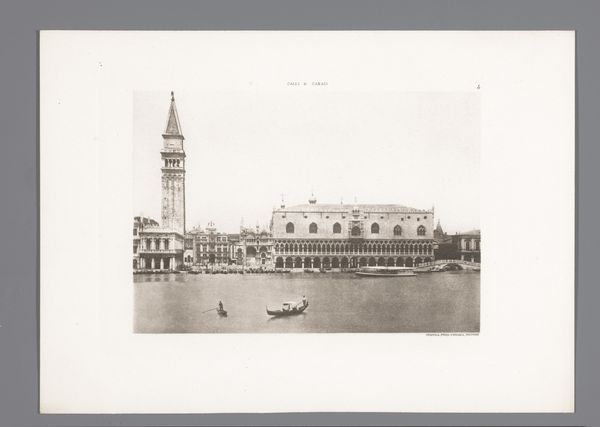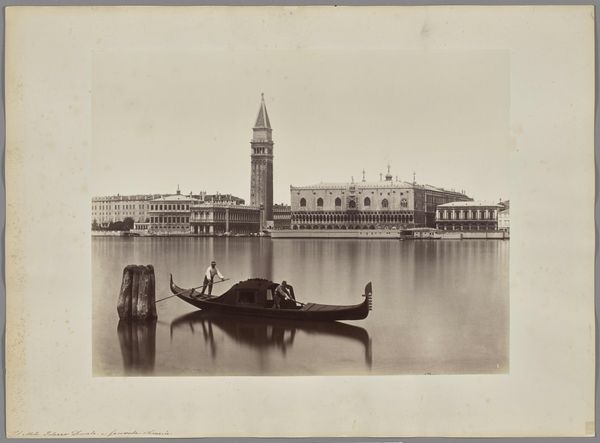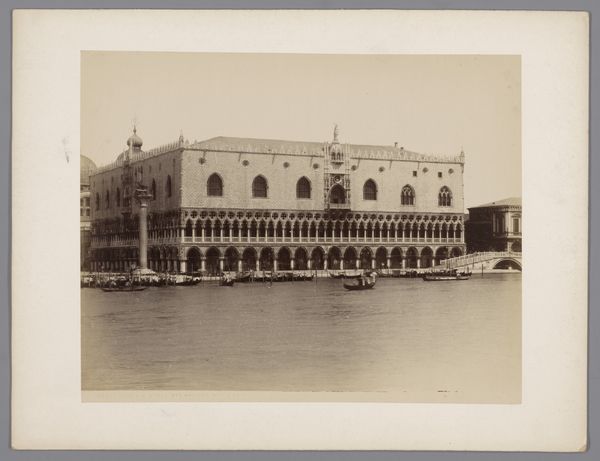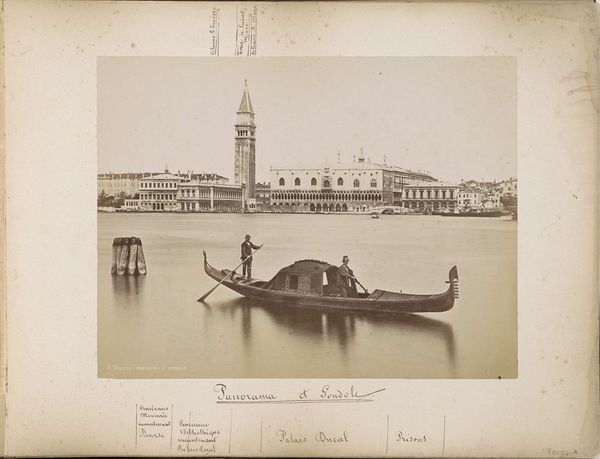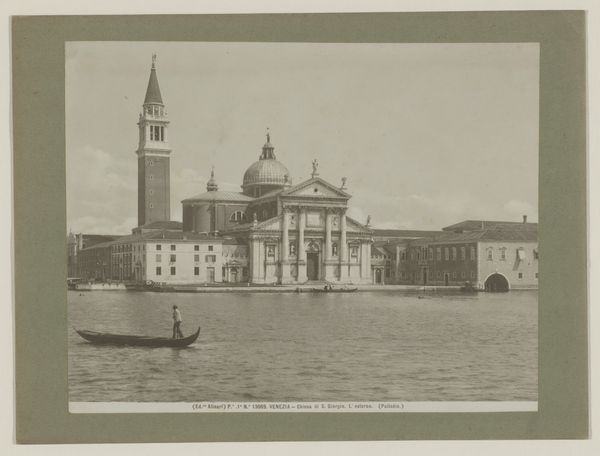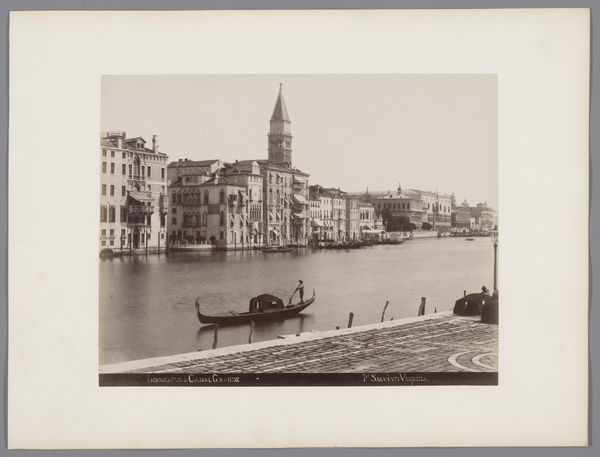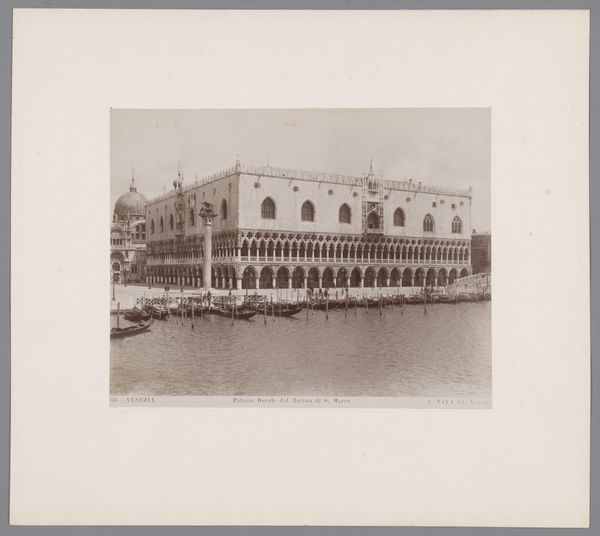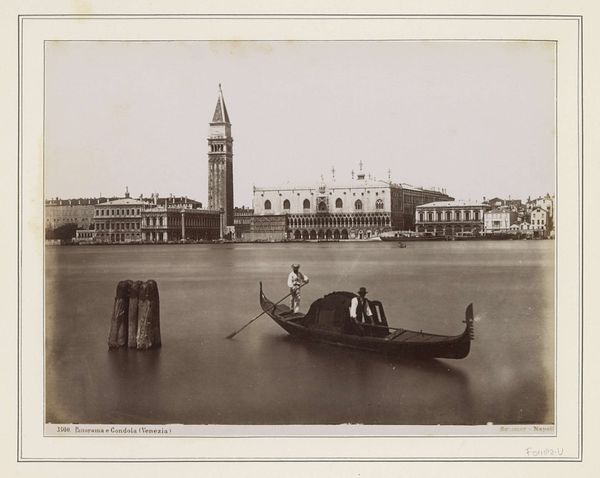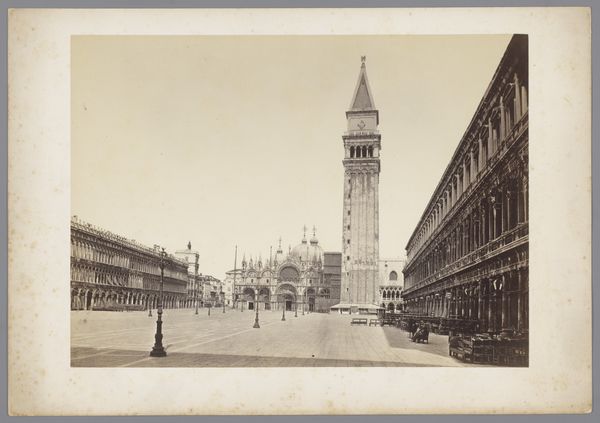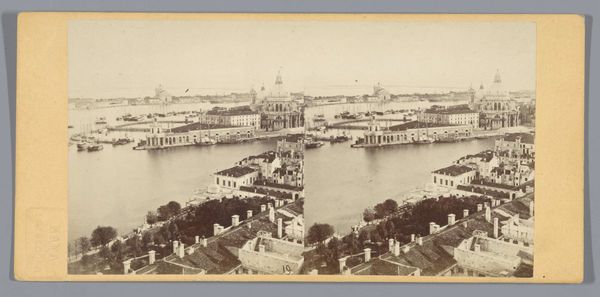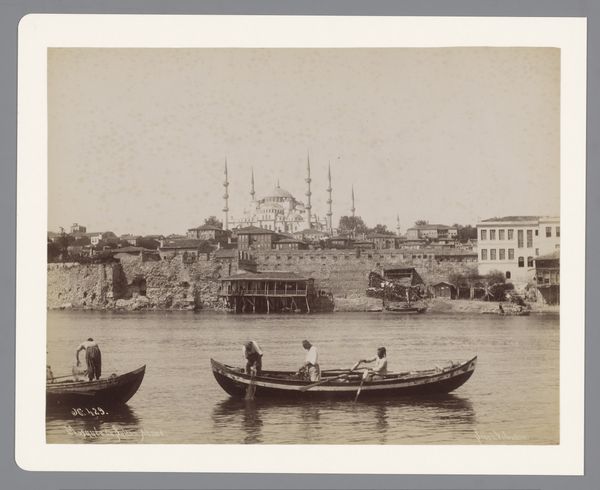
Gezicht op het Dogepaleis, de San Marco en de campanile te Venetië, Italië 1852 - 1893
0:00
0:00
Dimensions: height 320 mm, width 479 mm
Copyright: Rijks Museum: Open Domain
Editor: This photograph, taken by Carlo Ponti between 1852 and 1893, captures the Doge's Palace, St. Mark's, and the Campanile in Venice. There's something quite melancholic about it, despite the grandeur of the buildings. What do you see in this piece? Curator: The melancholic mood you describe speaks to a larger narrative about Venice at that time. Photography itself, still relatively new, offered a way to document the city's perceived decline from its powerful past. Look at the ship dominating the foreground; it's a symbol of trade and perhaps colonial reach, yet also a sign of encroaching modernity challenging Venice's unique identity. Do you see any dissonance between the old and the new here? Editor: I see what you mean. The ship seems almost too big, too industrial for such a historic setting. It definitely contrasts with the delicate architecture. Curator: Exactly! And consider the composition. The high vantage point flattens the image, compressing centuries of Venetian history into a single frame. The soft focus, characteristic of early photography, almost romanticizes the scene. But doesn’t this romantic vision risk overlooking the complex social realities of the city? Who benefits from this picturesque view, and whose stories are erased? Editor: So, it's not just a pretty picture. It's about power, progress, and how we choose to remember the past? Curator: Precisely. Ponti's photograph serves as a powerful reminder of how art can both reflect and shape our understanding of cultural identity. We must keep asking: who controls the narrative, and what is being left out of the frame? Editor: This has made me consider it with fresh eyes, thanks for sharing that perspective. Curator: And thank you for prompting this critical dialogue. It's through these kinds of questions that we can truly begin to unpack the meaning behind these historical artworks.
Comments
No comments
Be the first to comment and join the conversation on the ultimate creative platform.

